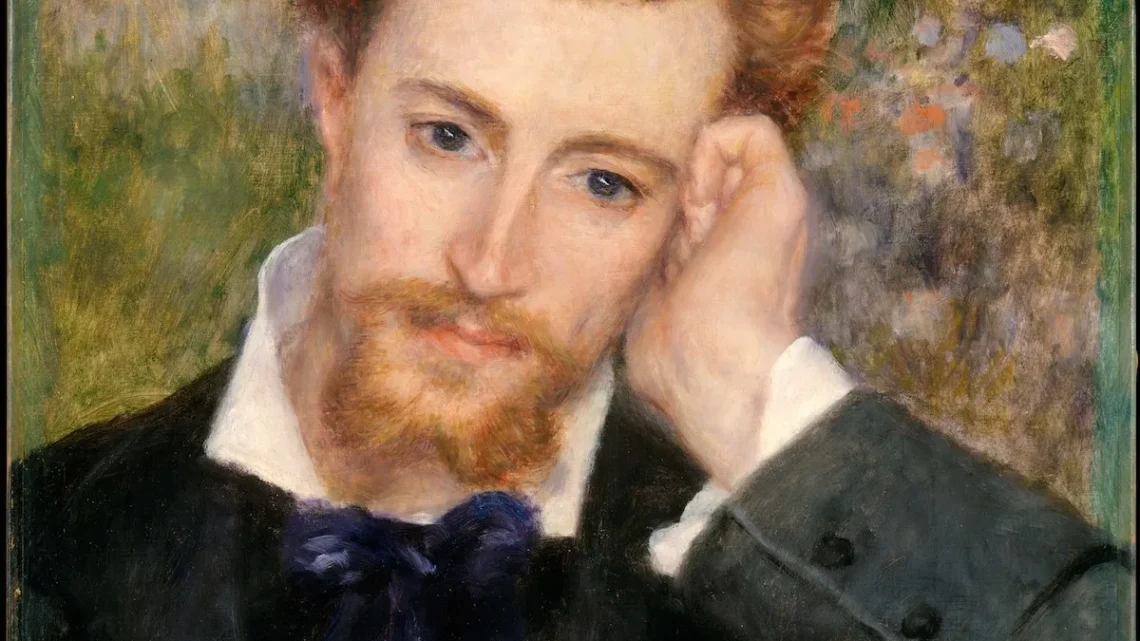
Pierre-Auguste Renoir Biography: Wife, Age, Net Worth, Siblings, Parents, Height, Children, Cause of Death, Books, Awards
Pierre-Auguste Renoir was a French artist who played a pivotal role in the Impressionist movement.
He gained widespread recognition for his vibrant depictions of everyday life, particularly his paintings of Parisian society and landscapes.
Trending Now!!:
Renoir’s mastery of light and colour, combined with his expressive brushwork, established him as one of the most celebrated painters of his time.
His works continue to be admired for their beauty. They capture the fleeting moments and essence of modern life in the late 19th century.
Profile
- Full name: Pierre-Auguste Renoir
- Date of birth: February 25, 1841
- Age as of 2024: Would be 183 years old
- Gender: Male
- Place of birth: Limoges, France
- Nationality: French
- Profession: Artist (Painter)
- Height: N/A
- Parents: Léonard Renoir (father), Marguerite Merlet (mother)
- Siblings: 5
- Spouse: Aline Victorine Chariot (married 1890)
- Children: Pierre Renoir, Jean Renoir, Claude Renoir
- Relationship status: Deceased
- Religion: N/A
- Ethnicity: White
- Net worth: $10 million
Early Life and Education
Pierre-Auguste Renoir, who would be 183 years old in 2024, was born on February 25, 1841, in Limoges, France, to Léonard Renoir, a tailor, and Marguerite Merlet.
His family, seeking better opportunities, moved to Paris when he was just three years old. Growing up in a vibrant city, young Renoir displayed an early aptitude for art.
At 13, his artistic talent led him to an apprenticeship at a porcelain factory where he painted designs on fine china. This early experience gave him valuable skills in handling brushes and pigments, laying the foundation for his future artistic endeavours.
He supplemented his income by painting hangings for overseas missionaries and decorations on fans, showcasing his versatility and entrepreneurial spirit.
Renoir attended evening classes at the École Gratuite de Dessin to refine his artistic abilities further. In 1862, he formally enrolled at the prestigious École des Beaux-Arts in Paris, immersing himself in academic art training.
During this time, he crossed paths with fellow artists Claude Monet, Alfred Sisley, and Frédéric Bazille, forging friendships that would shape the course of art history.
Together, they challenged the prevailing academic conventions, venturing outdoors to paint en plein air, capturing the fleeting effects of light and atmosphere.
Personal Life
Renoir’s personal life was deeply intertwined with his art. In 1890, he married Aline Victorine Charigot, a woman 20 years his junior who had been a model for several of his paintings.
With her radiant beauty and warm personality, Aline became a constant source of inspiration and support for Renoir. She frequently appeared in his works, most notably in paintings such as “Lunch at the Restaurant Fournaise” (1875) and “Dance in the City” (1883).
Though relatively late in Renoir‘s life, their marriage was happy and fulfilling. They had three sons: Pierre, who became a stage and film actor; Jean, who achieved renown as a filmmaker; and Claude, who pursued a career as a ceramic artist. Aline’s presence brought stability and joy to Renoir’s life, providing a nurturing environment that fostered his creativity.
Career
Renoir’s career spanned over five decades and was marked by a constant evolution of style and subject matter. He was a prolific artist, producing an estimated 6,000 paintings, drawings, and sculptures.
His early works were characterized by vibrant colours, loose brushwork, and emphasis on capturing the fleeting effects of light that defined the Impressionist style. He often painted scenes of Parisian life, capturing the energy and vibrancy of the city’s cafes, dance halls, and parks.
Some of his most celebrated works from this period include “Bal du moulin de la Galette (1876),” a lively depiction of a Sunday afternoon dance, and “Luncheon of the Boating Party (1881),” a portrayal of a leisurely gathering of friends on a sunny day.
In the 1880s, Renoir underwent a stylistic exploration known as his “Ingres period,” where he sought to give his figures more excellent structure and definition.
He was inspired by the works of classical masters such as Raphael and Ingres, and his paintings from this period exhibit a more linear and sculptural quality.
However, Renoir never abandoned his love of colour and light; his later works are characterized by a harmonious blend of Impressionist and classical influences.
He continued to paint various subjects, including portraits, nudes, landscapes, and still lifes, all imbued with his signature warmth and sensuality.
Awards
- Legion of Honor (1900) – This prestigious French order was bestowed upon Renoir for his significant contributions to the arts.
Net Worth
It isn’t easy to ascertain Renoir’s net worth during his lifetime, but some sources estimate it to be about $10 million. As a successful artist, his income derived from the sale of his paintings and commissions from patrons.
While the exact financial details are not widely documented, the enduring value of his works and his prolific output suggest a considerable level of financial success during his career. Today, his paintings are among the most sought-after in the world, fetching astronomical prices at auction.
Death
In his later years, Renoir had rheumatoid arthritis, which severely limited his mobility and caused him great pain. Despite these challenges, he continued to paint with the help of assistants, even strapping brushes to his deformed hands to continue his artistic pursuits.
Renoir died on December 3, 1919, in Cagnes-sur-Mer, France, at the age of 78. He left behind a vast and influential body of work that continues to inspire and captivate art lovers worldwide.
Controversy
While Renoir’s artistic legacy is primarily celebrated, some criticisms and controversies have surrounded his work. Some critics argue that his idealized depictions of women perpetuate traditional gender roles and objectification.
They contend that his focus on feminine beauty and sensuality, particularly in his numerous nude paintings, reinforces a male gaze and objectifies women as passive objects of desire. Others have questioned the extent to which his Impressionist style accurately reflects reality.
They argue that his paintings present an overly romanticized and idealized worldview, ignoring his time’s social and political realities. Despite these criticisms, Renoir’s artistic merit and influence remain primarily undisputed.
Social Media
- N/A
Books
- Renoir (1962)
NOTICE!! NOTICE!! NOTICE!!
DISCLAIMER!! : Every Biography and Content Published On TheCityCeleb are For Knowledge Reason. Don't Hesitate to Reach Out for Any Correction || Suggestion || Copyright!!CORRECT@thecityceleb.com


